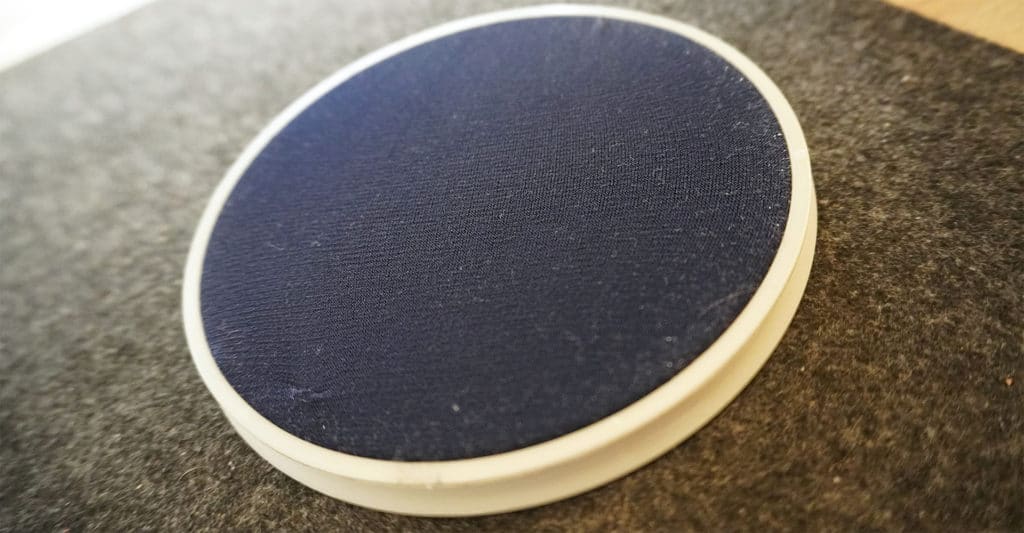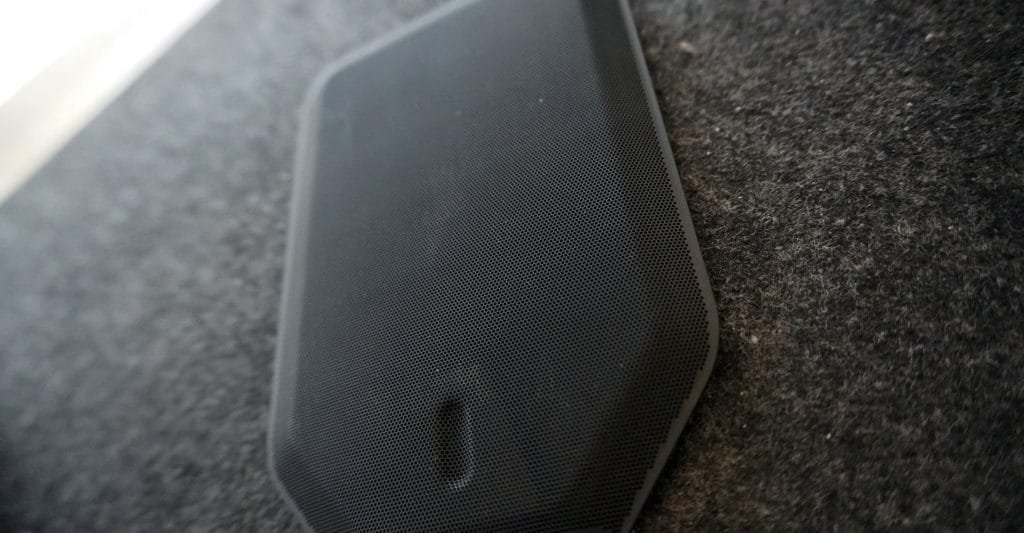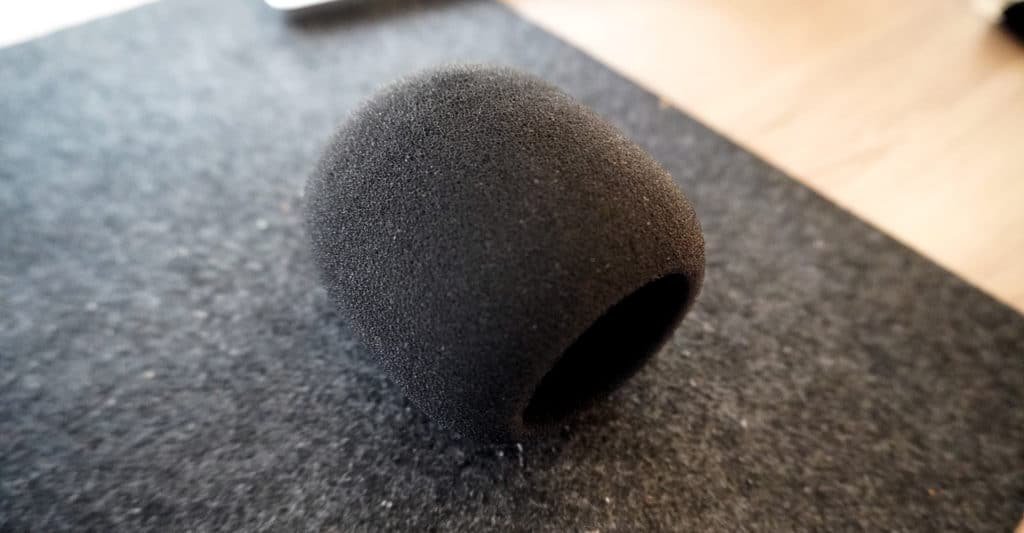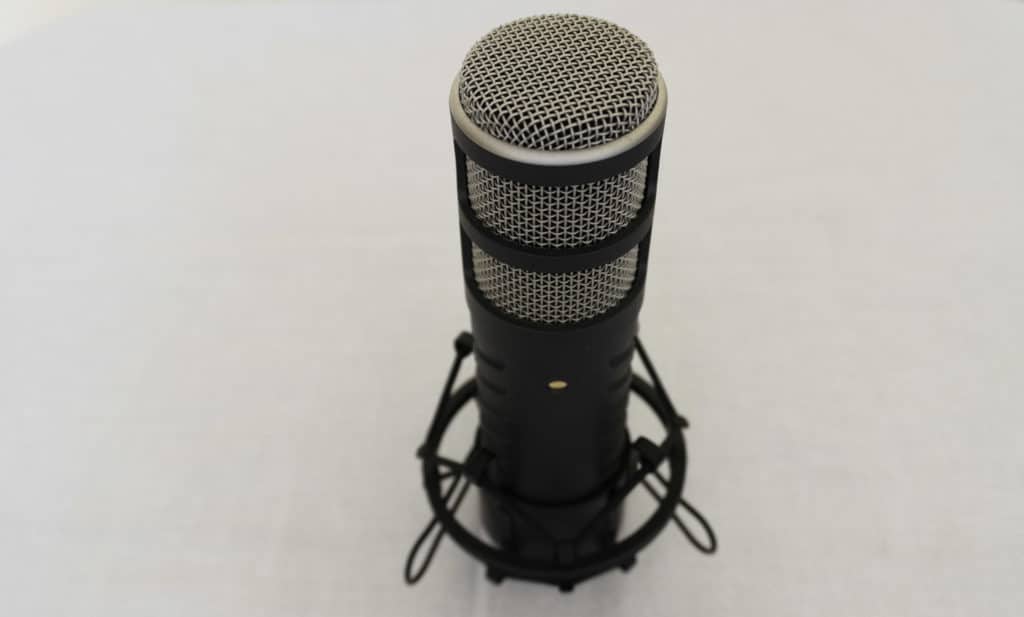Pop-filters are often used for voice-over or music recording. They are also quite cheap, but how effective are they actually?
In this article, we will overview how effective pop-filters are at preventing plosives and we will look at other benefits from using pop-filters because I can tell you right now, they serve many purposes when recording audio.
Preventing plosives
Pop-filters work by diffusing air, which would otherwise hit a sensitive diaphragm in a microphone creating a distorted plosive.
To answer shortly regarding whether pop-filters make a difference when recording – they do. Pop-filters will attenuate plosives and prevent some of the air from hitting the microphone. Still, they will not guarantee full protection against plosives, they will only mitigate them. Good technique and avoiding harsh “p” and “b” sounds will help to prevent all plosives.
Here is a test of how different pop-filters mitigate plosives and sound:
No pop-filter:
Nylon mesh pop-filter:
Metal mesh pop-filter:
Acoustic foam pop-filter / windscreen:
Without a pop-filter, there are a few plosives in the recording that also made it clip and distorted the audio.
Using any of the three different types of pop-filters significantly reduced plosives.
Distancing
Today pop-filters are mainly used to prevent or at least attenuate plosives, but they are also very useful for controlling the distance between a voice-over artist or singer and a microphone.
Usually, you want to speak two fists away from your microphone. Although, it sometimes depends on what kind of voice you are trying to achieve.
Nevertheless, with a pop-filter in front of you will never need to worry about speaking too close to a microphone as pop-filter will prevent you from doing so. You may still speak from too afar, however, that’s usually less of a problem.
Changing distance from your microphone may affect how you sound due to proximity effect. Therefore, for consistent performance pop-filter is a very handy tool to use.
Protecting from spit
If I am not mistaken, pop-filters were primarily made to prevent spit from coming into the microphone and attenuating plosives has been noticed as a side benefit.
Well, even if it is not true, pop-filter is still a great tool to avoid spit from coming into your microphone, which might ruin it over time.
The problem may not be as noticeable at first, however, if allowed to accumulate your microphone’s quality might gradually diminish. Condenser and ribbon microphones are especially susceptible to such damage.
Different types of pop-filters
Pop-filters come in many styles and there are a couple of nuances about them, so let’s look into each.
Nylon pop-filter

Nylon pop-filters are the most standard option you will find. You can get one for as much as $10 and their best advantage is their low price.
But they may obscure your vision when looking into a script. Nylon mesh pop-filters usually have thick outlines that obstruct the vision and they are a bit hard to look through.
Not a deal breaker, but it can be better.
Also, nylon pop-filters are easy to tear and sometimes it is a bit of a hassle to attach them to your swivel arm or a stand.
For better performance you might want to look for double layer pop-filter.
Metal mesh pop-filter

Metal mesh pop-filters are similar to nylon pop-filters, but they don’t have annoying outlines to obstruct your vision. Nevertheless, you will still be looking through a mesh.
Also, it is much harder to tear metal than nylon, so they are more durable.
These benefits come at a slightly higher cost, but pop-filters are cheap, to begin with, so you might want to invest an additional $10 and save the hassle.
For even better performance you might want to look for double layer pop-filter.
Acoustic foam pop-filter

Acoustic foam pop-filter is a different type of pop-filter altogether. These are the ones you see news reporters putting on their microphones with promotions on them.
They may be more often called windscreens, but the purpose is the same – to prevent plosives and avoid spit.
This type of pop-filters won’t help you with controlling the distance between the speaker and the microphone like mesh pop-filters would.
Acoustic foam pop-filters are better at preventing plosives from all directions, so if you are planning to do interviews or use your microphone outdoors, they are a better option. Not that you could attach mesh pop-filter directly to your microphone anyway.
They are very handy when dealing with a windy environment, also they are easier to carry around. In addition, I like to put acoustic foam pop-filters on my microphones when not using them to prevent them from collecting dust.
When I am traveling I am also putting acoustic foam pop-filters onto microphones to help absorb some of the potential damage.
So far so good. But there is more. They are extremely cheap and you can get a bunch of them for less than $10.
So, why don’t we all use acoustic foam pop-filters?
Mainly because they change the sound. While mesh pop-filters may be obtrusive and a bit more expensive, they don’t mess with the most important part of audio recording, which is your sound quality.
Acoustic foam pop-filters attenuate higher frequencies making your audio sound a bit muffled. The thicker the foam the more you will notice the difference.
Besides, they are not as good at avoiding plosives compared to mesh type pop-filters.
Built-in pop-filter

Some of the microphones have built-in pop-filters/windscreens. For example, Rode Procaster has one. Other microphones have acoustic foam pop-filters designed especially for them. For example, Shure SM7B.
These sorts of microphones usually are designed taking into account a built-in pop-filter and sound good with it.
You might still want to use additional mesh pop-filter for additional protection against plosives.
Do pop-filters prevent background noise?
There is a bit of misunderstanding regarding pop-filters and background noise. They DO NOT prevent background noise.
They only diffuse air that is coming from your mouth into the microphone. Also, if you are in windy environment they will attenuate plosives originating from the wind.
But they do not attenuate noise. Pop-filters are made to diffuse the air which physically hits the diaphragm inside the microphone, they don’t stop the noise.
Makeshift pop-filters
Sometimes you don’t have access to a pop-filter. You can either try recording without it, or you might try some alternatives.
If you have two pencils, you can put them together and hold in front of you when recording. The pencils will split and diffuse the air that may otherwise reach the microphone.
If you don’t have access to the pencils either, then fingers will work just as well.
How to avoid plosives without a pop-filter?
Pop-filters have their use and are beneficial, but if you don’t fancy using one you can get away without it.
When recording, the best technique to avoid plosives is placing the microphone a bit to the left or the right of your mouth so that the air from your mouth would go past it. At the same time, the microphone should be facing your mouth to catch most of the sound.
This technique will probably prevent more plosives than any pop-filter could.

Pingback: How to Prevent and Remove Breaths from Audio Recordings? - Voice Over Tip